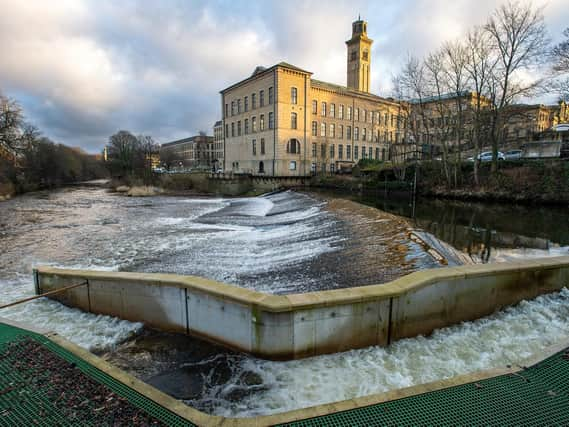Saltaire given commitment by council to ensure it remains on prestigious UNESCO World Heritage Site list


Saltaire, the industrial village in West Yorkshire that remains a testament to philanthropism by the Victorian mill owner and politician Sir Titus Salt, is one of only two locations in the region to have secured the prestigious UNESCO World Heritage status.
But with the decision by the global heritage organisation to strip Liverpool of its own designation due to concerns over developments along the Merseyside city’s waterfront, Bradford Council reaffirmed its commitment to ensure that Saltaire remains on UNESCO’s list, which also includes the Taj Mahal in India, Yosemite National Park in California and the Great Wall of China.
Advertisement
Hide AdAdvertisement
Hide AdThe council has made a series of investments in Saltaire, which is this year marking the 20th anniversary of receiving its UNESCO status, including restoring stone pavements and creating new footpaths to the surrounding neighbourhoods.


The only other UNESCO World Heritage site in Yorkshire is Fountains Abbey and Studley Royal, near Ripon, which was awarded its own designation on June 11, 1986.
Bradford Council’s portfolio holder for regeneration and planning, Coun Alex Ross-Shaw, said: “We are very proud of Saltaire and value our district’s fascinating heritage.
“The council and our partners are committed to protect the village’s UNESCO status and will continue to invest in its protection and enhancement.”
Advertisement
Hide AdAdvertisement
Hide AdProposals have been drawn up for an active travel zone to make the village more accessible to live, work and visit.
New riverside paths have been created with new interpretation boards, trees, benches and way markers to encourage residents and visitors to explore the wider area.
The council has also invested in temporary pavement extensions on Gordon Terrace to provide more space for pedestrians.
The Bradford district’s Local Plan, which sets out a vision for long-term development, has also been drawn up to protect Saltaire, and developments within the World Heritage site or its buffer zone checked closely.
Advertisement
Hide AdAdvertisement
Hide AdThere has been an increase in applications for Listed Building Consent and investment in properties in Saltaire in the 2020/21 financial year with window and doors restored and re-roofing, meaning the character and appearance of Saltaire has improved significantly.
UNESCO says Saltaire is “an outstanding and well preserved example of a mid-19th century industrial town” and a model for other places around the
world.
Liverpool was last month stripped of its World Heritage status after a United Nations committee decided that a series of developments threatened to undermine the city’s waterfront.
UNESCO officials had said that the developments, which include the planned new Everton FC stadium, had led to a “serious deterioration” of the historic site.
Advertisement
Hide AdAdvertisement
Hide AdThe decision was described as “incomprehensible” by Liverpool’s mayor Joanne Anderson.
Saltaire itself was inscribed on the UNESCO World Heritage List in 2001 to recognise the efforts of the Victorian philanthropist, Sir Titus Salt, in creating the village around his textile business at Salts Mill.
It was recognised for its influence on town planning and as one of the earliest and best preserved 19th century ‘model villages’, with Italianate architecture for mills, houses and public buildings.
Saltaire is one of two UNESCO accreditations in the Bradford district, with Bradford becoming the world’s first UNESCO City of Film in 2009. It is now part of a global network of 246 creative cities.